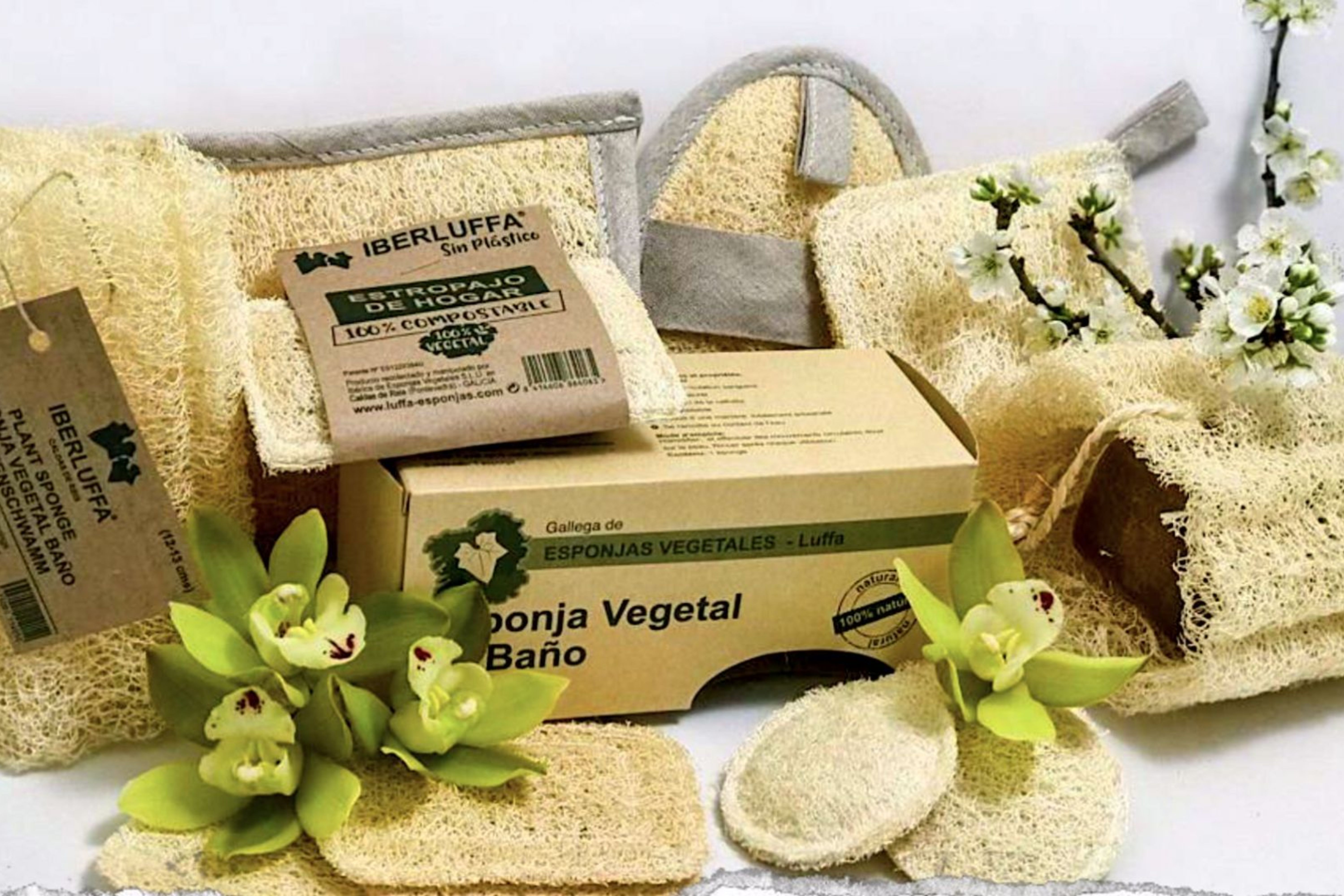
Latest information

Pumpkin "flavoured" kitchen sponges
In the Galician Innovation and Materials Quarry, promoted by the Galician Innovation Agency and which brings together different innovative and sustainable materials created in rural Galicia, we find the cylindrical luffa marketed by the Pontevedra-based company Ibérica de Esponjas. It is a project that combines nature and creativity based on the production of 100% natural and biodegradable vegetable sponges from a pumpkin and behind which there are two entrepreneurs: Juan Carlos Mascato and Itziar Endeiza.
Thermal water is key to this project, hence its strategic location, the municipality of Caldas de Reis, rich in mineral-medicinal waters. It is in this enclave where the forestry technician and son of Galician emigrants Juan Carlos Mascato decided to start his business, after having discovered the luffa in South America and after having improved the fibre at a genetic level to adapt it to the daily use of our homes and thus prevent people from consuming plastic on their skin.
Today, Ibérica de Esponjas is the world's largest company in the cultivation, handling and processing of luffa vegetable sponges. Juan Carlos Mascato, administrator and technical director of the company, explains that its crops are not only grown in Galicia but also in other countries, including Egypt, Gambia and Portugal. Production crosses the Atlantic with the cultivation of its pumpkins in Colombia and the USA. In Caldas de Reis alone, its pumpkin production covers 40,000 square metres.
Ninety-five percent of its production is sold on the foreign market, mainly in Europe but also in places such as Taiwan, New Zealand and Canada. In addition, the climate and the properties of the plant, capable of adapting to any environment, have led them to launch a rural development project in Colombia.
Process of obtaining the products
Pumpkin cultivation is carried out on the lands of Caldas de Reis and in the different parts of the world where they have luffa production. When the fruit is ripe, the pumpkin peel is removed to determine the condition of the fibre inside. This is the material from which they will make sponges and other plant fibre products for cosmetic use. Once the crop is harvested, the vegetable is left in cold water to remove the bark and separate the vegetable sponge.
After this process, the sponge is beaten so that the seeds and cucurbitacin, a property of cucumber that moisturises and repairs the skin, fall out. After the beating process, they are put back into water, but this time thermal water, which improves their properties. The last phase, after this bath and before processing, is the drying of the pieces.
The final finishing is the most laborious part, since it involves a hand crafted process in which they open each sponge by hand to obtain the different products they sell, among which are shower mitts, sponges, bags for bars of soap and, the star product, the kitchen sponge.
To obtain these pumpkins, they have had to modify the genetic base of the plant by crossing different varieties to produce a high quality fibre. The original had a maximum size of 30 centimetres, while its new crops reach a metre of sponge. "We improve the plant's base by optimising results," Mascato explains.
The managers of Ibérica de Esponjas are pioneers of the anti-plastic movement in Europe, which is why the packaging in which their products are wrapped is also made of recycled material. Craftsmanship, quality and ecology are the key to the success of these sponges, ideal for cleaning the skin, for domestic use and to contribute to the care of the planet.